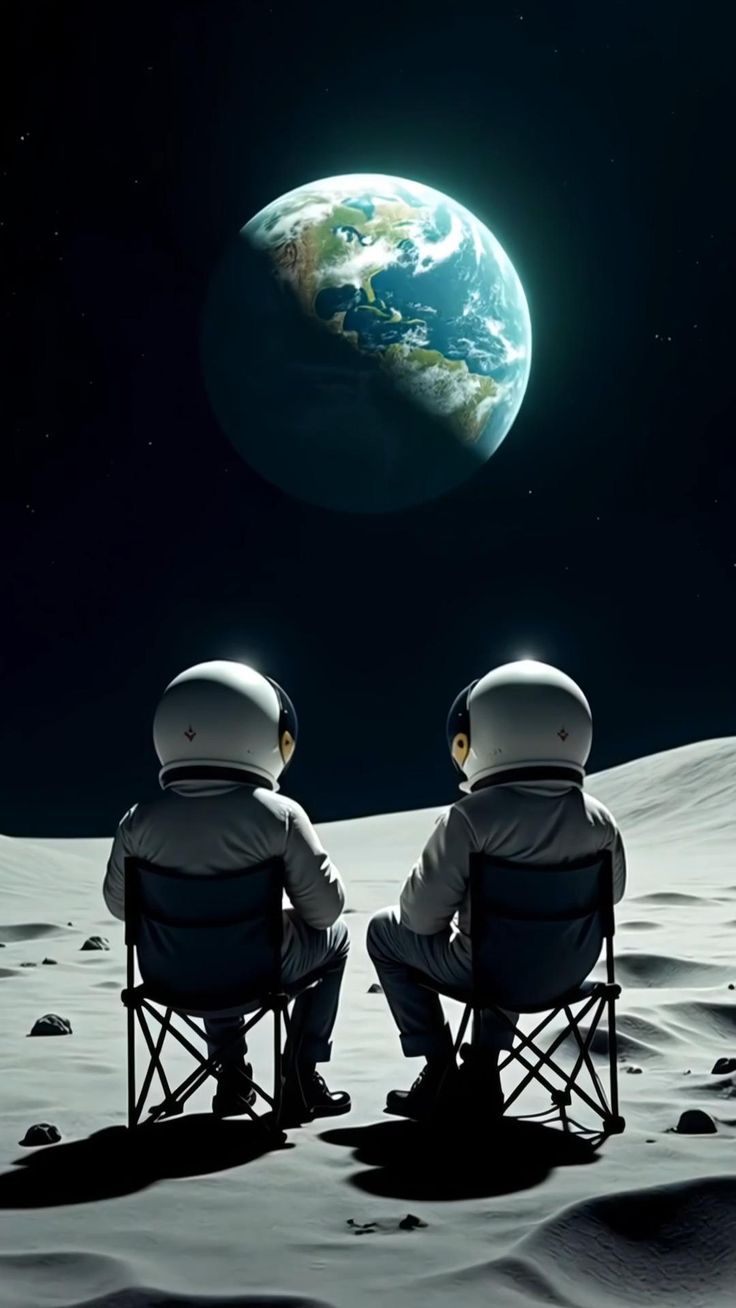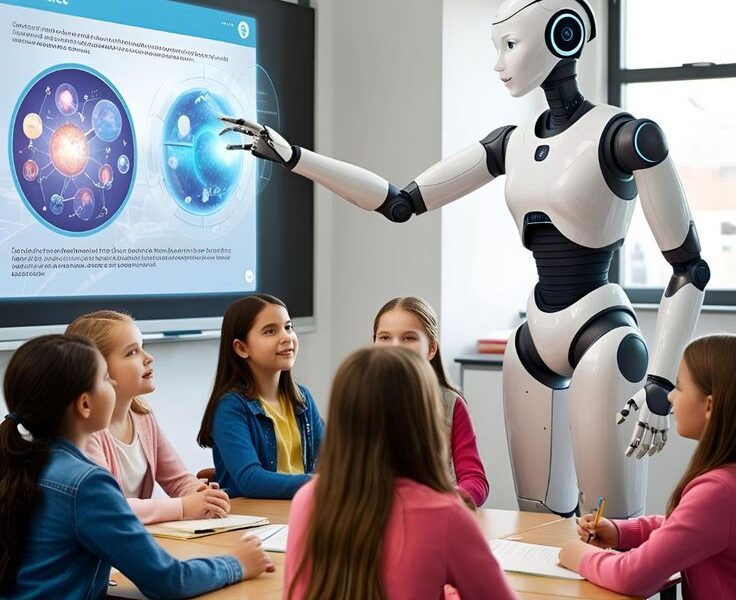🚀 **The Beginning of Robotic Revolution in Space Exploration**
The involvement of robotics in space exploration has incredibly expanded the scope of human discovery, opening new doors to understanding not only our solar system but also the universe beyond. These robotic systems can operate in extremely difficult and dangerous environments where human life could face severe risks, and they can perform tasks beyond human physical limits. The first generation of space robots has played a crucial role in the journey from collecting rocks from the Moon’s surface to conducting in-depth research on Mars’ red soil. Now this technology has reached a stage where it can make autonomous decisions. The use of artificial intelligence in modern robotic rovers has enabled them to operate without continuous control from scientists on Earth, solving the problem of light-speed delay faced by missions at distances like Mars. These robots are not limited to Earth-like planets; they have also continued their journey towards extremely hot and high-pressure environments like Venus and the moons of gas giant planets like Jupiter. Another important form of space robots is robotic arms, which are installed on space stations and perform important tasks such as satellite repair, delivering equipment for experiments, and assisting astronauts during spacewalks. These arms operate with extreme precision and delicacy, working far more consistently and for longer durations than human hands. From cleaning space debris to constructing new space stations, these robotic systems have become essential components in every aspect of space exploration. In coming years, we will see a new generation of space robots that will be completely autonomous, capable of deep excavation, performing complex repair tasks, and even building infrastructure on other planets, paving the way for human space missions.

⛏️ **New Horizons in Planetary Mining**
The concept of planetary mining is now becoming reality rather than science fiction, with robotics playing a key role. The valuable minerals and water deposits found on the Moon, Mars, and asteroids have attracted the attention of international space agencies and private companies. Robotic systems are the means that can make accessing these resources possible. The vast deposits of Helium-3 on the lunar surface, which are rare on Earth, could meet future energy needs, while water ice deposits on Mars will not only serve as drinking water sources but could also be converted into hydrogen and oxygen for rocket fuel. Robotic mining systems will include autonomous drilling machines, material-handling robotic arms, and transportation robots working together. These systems will be designed to operate in extremely harsh conditions where temperatures can be very low or high, and radiation levels can reach dangerous levels. A major advantage of robotic mining is that it enables resource exploration and utilization in remote locations far from Earth, reducing space mission costs and making them self-sufficient. Fuel production from water deposits on Mars could refuel rockets, making return journeys possible. Precious metals found on asteroids, such as platinum and gold, could also benefit Earth’s economy. The use of advanced sensors and AI in robotic mining systems will help identify valuable materials, extract them, and process them. These systems will operate under control from Earth-based operators but will become increasingly autonomous over time. The technology development required for space mining has also improved terrestrial mining, where autonomous systems operate in dangerous conditions. In coming decades, we might see the first robotic mining colonies on the Moon that would not only supply fuel for space missions but also send valuable minerals to Earth.
🌌 **Autonomous Systems in Interplanetary Missions**
Robotics plays an extremely important role in interplanetary missions, especially when distances and risks are too great for human missions. Robotic spacecraft have already reached the edges of our solar system and are collecting data that paves the way for human missions. Missions like Voyager, Cassini, and New Horizons have provided valuable information about outer planets, their moons, and Kuiper Belt objects. These missions are fully autonomous, following instructions from Earth but also capable of making their own decisions in unexpected situations. A crucial aspect of interplanetary robotic missions is their ability to operate autonomously for long periods since sending signals to and from Earth can take hours or days. Modern robotic systems include fault detection and self-repair capabilities that keep them operational for extended durations. Another important role of robots in interplanetary missions is in sample return missions, where robots collect samples from other planets and bring them back to Earth. The OSIRIS-REx mission collected samples from asteroid Bennu, while work continues on the Mars sample return mission. These samples provide scientists with deep insights into solar system formation and the origin of life. The scope of robotic interplanetary missions continues to expand, with private companies now entering this field. Reusable rockets like SpaceX’s Starship have reduced interplanetary travel costs, creating new opportunities for robotic missions. In coming years, we might see robotic submarines exploring oceans beneath the icy surface of Jupiter’s moon Europa, and robots designed to withstand Venus’ extremely hot surface. These missions will help us understand whether life exists elsewhere in our solar system.
🛰️ **Construction and Maintenance of Space Infrastructure**
Robotics’ role in space infrastructure construction and maintenance grows increasingly important daily as the number of space stations, satellites, and other space structures continues to increase. Robotic arms like the Canadarm2 installed on the International Space Station are used for space station repairs, satellite installation, and assisting astronauts during spacewalks. These arms can lift large, heavy objects with extreme precision and deliver them to required locations. An important role of robots in space infrastructure construction is on-orbit servicing, where robotic machinery repairs and upgrades satellites in space itself. This capability can extend satellite lifespans and reduce space debris. In coming years, we might see 3D printing technology used in space, where robots could construct large structures in space itself. This technology could prove crucial for building human settlements on the Moon and Mars. Robots could recycle space shuttle external fuel tanks to construct new structures, reducing space mission costs. Another important role of robots in space infrastructure maintenance is inspection and monitoring. Robotic systems can inspect space stations’ external parts, identify damage, and perform necessary repair tasks. This capability reduces the need for dangerous spacewalks by human astronauts. Robots also play a significant role in space debris management, collecting defunct satellites and other space debris or moving them to safe orbits. In coming decades, we might see automated factories in space where robots would manufacture equipment needed for space missions.
🔭 **Scientific Research and Data Collection**
Robots have revolutionized space scientific research, collecting data that was impossible to obtain through human missions. Mars rovers like Curiosity and Perseverance conduct detailed examinations of the planet’s surface, collect rock samples, and search for signs of past life. These rovers are equipped with advanced scientific instruments that analyze mineralogy, atmospheric conditions, and radiation levels. Robotic missions have provided deep understanding of Mars’ climate, geology, and past conditions. The discovery of water ice in the Moon’s deep craters is also an achievement of robotic missions. Robotic landers like the InSight lander have studied Mars’ interior and measured marsquakes. In space telescopes like the Hubble Space Telescope, robotic systems are used for their repair and upgrading. In coming years, advanced telescopes like the James Webb Space Telescope will help understand universe mysteries more deeply with robotic systems’ assistance. Robots have also played important roles in outer planet missions. The Galileo probe directly studied Jupiter’s atmosphere, while the Cassini spacecraft provided valuable information about Saturn and its moons. These missions operate in extremely dangerous conditions where human life would be at severe risk. Robotic systems have also provided valuable information about asteroids and comets. Hayabusa2 and OSIRIS-REx missions collected samples from asteroids that tell us about the solar system’s early history. In coming years, we might see robotic missions to study interstellar space, helping us understand the universe beyond our solar system.
🌠 **Space Debris Management and Space Traffic Control**
The growing space debris problem has become a major challenge for the international space community, and robots are playing a key role in its solution. Thousands of tons of space debris exist in Earth’s orbit, posing threats to active satellites and space stations. Robotic systems are being designed to collect this debris, move it to safe orbits, or burn it in Earth’s atmosphere. These systems can use various methods like nets, harpoons, robotic arms, and magnetic docking systems. The development of robotic debris collection missions has helped keep the space environment clean. Missions like RemoveDEBRIS and ELSA-d have experimented with different space debris collection methods. Robots can not only collect space debris but also repair and reuse defunct satellites, reducing space debris. In space traffic control, robots also play important roles. Autonomous collision avoidance systems protect spacecraft from dangerous collisions. These systems detect nearby objects using radar, lidar, and optical sensors and perform necessary maneuvers. Another important role of robots in space debris management is monitoring and tracking. Robotic observatories monitor space debris from Earth and predict its movement. In coming years, we might see autonomous systems for space debris management that would continuously monitor Earth’s orbit and automatically remove dangerous objects. These systems will help ensure space mission safety.
👨🚀 **Assistance in Human Space Missions**
Robotic assistance in human space missions is extremely important, especially in long-term missions where astronauts require various types of help. Robotic systems reduce astronauts’ workload, perform dangerous tasks, and provide medical aid. Humanoid robots like Robonaut on the International Space Station have performed tasks such as preparing equipment for experiments, conducting simple repairs, and working alongside astronauts. In coming years, we might see more advanced humanoid robots capable of performing complex tasks with astronauts. An important robot role is in emergency situations where they can help extinguish fires, stop air leaks, and handle other emergencies. These systems can automatically detect emergencies and provide immediate responses. In long-term missions like Mars journeys, robots could also provide psychological support. Companion robots could reduce astronauts’ stress and improve their mental health. Another important robot role is in medical care, where they can perform diagnostic tests, conduct basic medical procedures, and collect data for remote doctors. In coming years, we might see surgical robots capable of handling medical emergencies in space. Robots can also assist in delivering supplies and equipment for space missions. Autonomous cargo spacecraft can deliver necessary supplies to space stations. These systems play vital roles in ensuring human mission success.
🔮 **The Future and Challenges of Space Robotics**
Space robotics’ future is extremely bright, but several challenges exist. With technological advancement, we’ll see more intelligent, autonomous, and versatile robots capable of performing complex tasks. The swarm robotics concept, where small robots work together to accomplish large tasks, could revolutionize space exploration. These swarms could be used for mapping large areas, constructing complex structures, and scientific experiments. The soft robotics field, creating flexible robots, could generate new opportunities in space exploration. These robots could work in tight spaces and handle delicate objects. Biomimetic robotics, inspired by natural designs, could improve space robot performance. Challenges include radiation hardening, coping with extreme temperatures, and long-term reliability. Space robots must operate for years in extremely harsh conditions, requiring robust designs and advanced materials. Communication delay problems, especially in deep space missions, increase autonomy importance. Ethical questions like planetary protection and space resource utilization rights are also important. International cooperation and regulations are needed to ensure peaceful, sustainable space robotics use. In coming decades, we might see human-robot collaboration on Mars, asteroid mining operations, and interstellar probes. This space robotics journey could help humanity understand universe mysteries and become an interstellar species.


